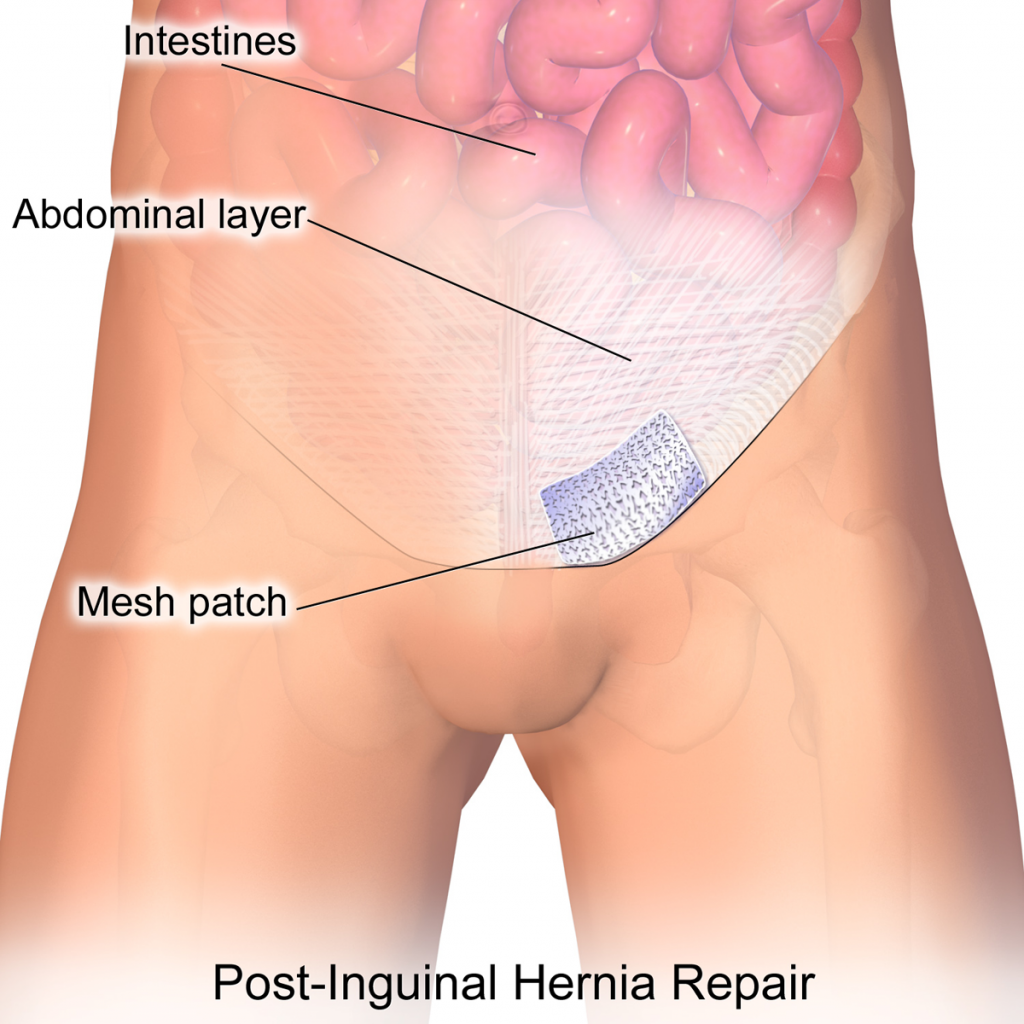Types of Hernia Repair Surgery

There are several different types of hernias:
- Inguinal hernia – (the most common hernia) bowel through lower abdomen epigastric hernia – fatty tissue pushes through the abdominal wall between the navel and lower part of the sternum.
- Femoral hernia – fatty tissue or a part of the bowel pushes into the groin (top of the inner thigh.)
- Hiatus hernia – a portion of the stomach is pushed through an opening in the diaphragm.
- Incisional hernia – when tissue pushes through a surgical wound.
- Muscle hernia – part of a muscle pokes through your abdomen.
- Spigelian hernia – part of the bowel thrusts through the side of the abdominal muscle (below the navel.)
- Umbilical hernia – fatty tissue or a portion of the bowel pushes through the abdomen close to the belly button.
How common is a hernia?
Hernias are more common in men than they are in women. You are at greater risk as you age or have a body mass index (BMI) of 30 or higher. You are also susceptible if you perform a lot of heavy lifting, suffer from an ongoing cough, or experience chronic constipation.
What can be done for hernia repair?
Hernia patients usually need surgery in order to remove the risk of the strangulation of the intestine or other organs or incarceration. Should a doctor believe that surgery can complicate already present medical conditions, a supportive hernia belt known as a truss may be worn to offer relief from pain and discomfort.
Type of Hernia Repair Surgery
There are four types of hernia repair surgery options available to patients:
Laparoscopic Repair
Laparoscopic repair, the least invasive option, is ideal for reoccurring hernias and repairing bilateral hernias. Also known as bandaid surgery or keyhole surgery, laparoscopic surgery uses three small incisions between 0.5–1.5 cm in order to insert a camera and various instruments in the abdominal area. The surgeon is then able to see the images on a TV monitor and implant mesh.
Hernia repair patients that have undergone laparoscopic surgery experience minimal pain for several weeks after surgery. They are usually able to go to work sooner than those patients who have other types of hernia repair surgery.
Shouldice (Canadian) Repair
Dr. E. E. Shouldice, a Canadian surgeon, created this popular surgical technique. Instead of a mesh, two permanent sutures are made in the abdomen wall. Four layers of deep muscle tissue are fastened together, giving the repair a more secure fix than in other hernia repair surgery options.
Because of the deep incision, discomfort and swelling are common, lasting several weeks after surgery.
Bassini Repair
The Bassini Repair slides the hernia patient’s muscles together in order to repair the hernia.
The conjoined tendon is sutured to the inguinal ligament. The incision is closed with a simple interrupted suture pattern.
Although this is a quick repair, the Bassini technique has a 30% recurrence rate, and recovery is slow.
Because of this, the Bassini repair is often recommended when a mesh repair is not an option for a hernia repair patient.
Tension-free Hernioplasty
The hernia is bridged by a permanent polypropylene mesh, a well-tolerated biologically safe, and very strong tissue substitute. The surgeon soaks the mesh in an antibiotic solution prior to surgery.
The mesh is then sutured to the groin tissue in order to close the hole, giving it added strength while avoiding tension, swelling, and discomfort. The patient’s tissues assimilate the mesh quickly.
After hernia repair surgery, patients are able to gradually return to their daily activities.
Pain medication is often prescribed for comfort.



